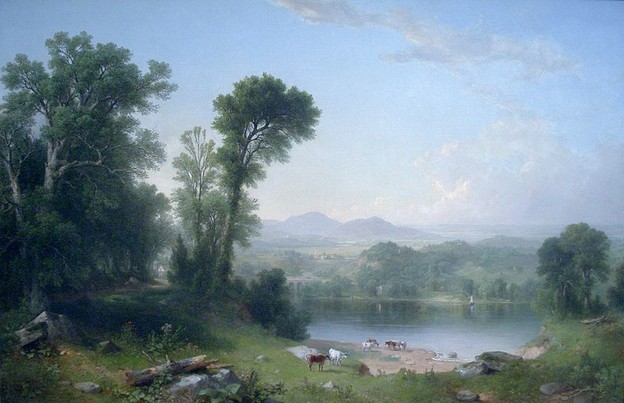Is not everything then possible?

I’ve been reading and pondering Raymond Williams’ book, The City and the Country, written in 1975, but fresh as a daisy today. What first struck me was his search for the original Arcadia, the source of the pastoral—the original harmony of human with nature that inspired all the pastoral poems to come thereafter. Of course, you say, the Garden of Eden! But Williams goes beyond that into the Roman and Greek roots of the form:
For if we look back into literature for significant writing about country life, we are taken many centuries beyond Virgil to the Works and Days of Hesiod, to the ninth century before Christ.
So, there he finds an “epic of husbandry”—the practice of agriculture—and the “long influence of this myth of the Golden Age.” But, here—and this is what struck me—“but for Hesoid, at the beginning of country literature, it is already far in the past.”
So back and back, and back. Each pastoral refers to an earlier age, and when Williams arrives at the pastorals of that time, they refer to an age even before that. The pastoral is a hall of mirrors, each poem reflecting another before that, and it’s difficult to determine any reality of a time when shepherds lived peacefully with their flocks, when all forests were original, when all plants were native to the place that they grew, and where humanity hadn’t, in some sense, exploited, enslaved, polluted, altered, domesticated, ate, drank, defecated on something else somehow somewhere.
A few days ago, I returned to New York City from a vacation in Woodstock, New York. As ever, re-entering the city was jarring, upsetting, exhilarating, and yet. Woodstock and most areas within several hours distance from the city are now in a sense minor variations on inhabited space—despite stars, trees, insects, outdoor water one can swim in without worrying about immediate bubonic plague or chemical burns, human life is still omnipresent. An airplane crossed the apex of the sky at the same hour each day. A pigeon sat on top of a telephone pole—its ancestors brought over as food on European ships. A pile of Cheetos was spilled on the ground next to a creek. The trees in my friend’s backyard are secondary plantings, like most of the trees in the northeast, replanted by humans or repopulating, after original forest was timbered for fuel, ship masts, whatever. I think often of the term “appalling blankness,” because so often, out in “nature,” what lies underneath an apparently lush landscape is actually a tragedy of extinct and endangered plants that are being replaced/have been replaced by a spreading corporation of green body-snatchers.
Even so, re-entering the city—the City, the CITY—is a shock. The illusion of nature, of wilderness, is ripped away. Leaving—nature? The question over and over is how humans fit into it all, and moreover, for me, for this blog, how poetry fits into that, or how “it” fits into poetry. Raymond Williams on the city: “…I find I do not say ‘There is your city, your great bourgeois monument, your towering structure of this still precarious civilisation’ or I do not only say that; I say also ‘This is what men have built, so often magnificently, and is not everything then possible?’” When I returned to the city after a long trip across the country into what was, for a city kid, terrifying space and wildness, the city looked like another kind of geological monument. But Ed Roberson in City Eclogue shows how the city is also made of human lives and how the pastoral form can evolve and is evolving to accommodate our overwhelming human presence within “ecology.”
Geometries of landscape